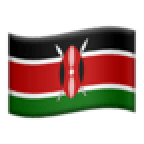Popular biker Brian CLKD recently shared a chilling video of an accident along Magadi Road. The footage not only captured the collision but also showed him rushing to the aid of the vehicle passengers.
In many road accidents, the first people on the scene are not doctors or paramedics but ordinary citizens. Their response can mean the difference between life and death.
This incident provides the perfect opportunity to highlight the dos and don’ts of first aid when helping accident victims.
The importance of immediate action
Every second counts after an accident. Immediate first aid from bystanders can stabilise victims and prevent further harm.
Brian’s response reflects the courage and compassion that often make bystanders the true first line of emergency care.
Dos: What to do when you are first at an accident scene
1. Ensure your own safety first
Before rushing to help, make sure the scene is safe. Stop your vehicle or motorbike at a safe distance, switch on hazard lights, and if possible, place warning triangles to alert other drivers.
Running into a dangerous scene can create more victims rather than save lives.
2. Call for help immediately
Dial the emergency numbers and provide clear details of the location, the number of victims, and the severity of injuries. While offering first aid is important, professional medical assistance is always the priority.
3. Approach victims with care
When checking on victims, speak calmly and clearly. If the person is conscious, introduce yourself and reassure them. Simple words such as 'Help is on the way' can reduce panic and shock.
4. Control bleeding
If a victim is bleeding heavily, use a clean cloth, gauze, or even clothing to apply pressure to the wound. Elevating the injured area, if possible, can also help slow blood loss.
)
5. Check for breathing and responsiveness
If a victim is unresponsive and not breathing, begin CPR if you are trained. Immediate chest compressions can keep oxygen flowing to vital organs until emergency responders arrive.
6. Keep the victim still
Head, neck, or back injuries are common in road accidents. If you suspect spinal injury, avoid moving the victim unless there is immediate danger such as fire or fuel leakage. Movement can worsen injuries and cause paralysis.
Don’ts: Common mistakes to avoid
1. Do not crowd the scene
While many people may want to help, crowding an accident site often causes confusion and delays professional responders. It also increases the risk of further accidents.
2. Do not give food or drink
Victims may be thirsty or disoriented, but giving them food or drink can be dangerous, especially if surgery is needed or if they are unconscious.
3. Do not move the victim unnecessarily
Lifting or dragging a victim without proper technique can worsen internal or spinal injuries. Only move them if there is an immediate life-threatening danger.
)
4. Do not remove helmets improperly
For motorbike accident victims, never remove a helmet unless it is absolutely necessary for CPR. Incorrect removal can cause severe spinal damage.
5. Do not play doctor
Stick to basic first aid. Avoid administering medication or attempting procedures you are not trained for. Your role is to keep the victim stable until professionals arrive.


)
)
)
)